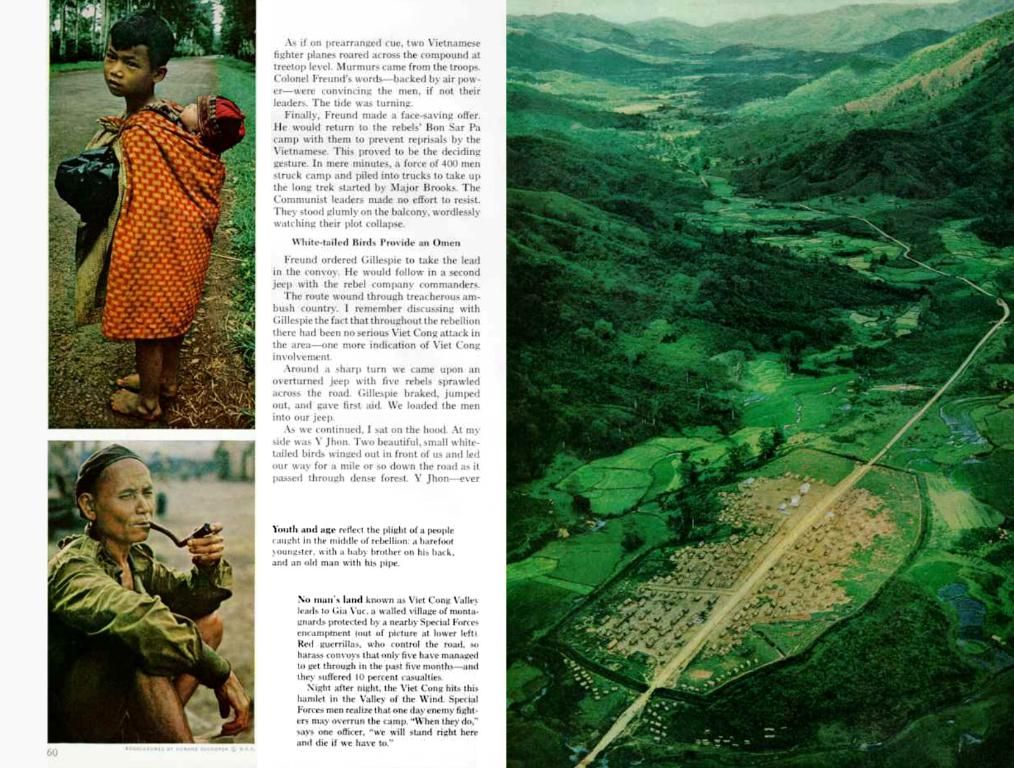The Current German Drought Crisis: A Severe Soil Moisture Problem
Drizzle is falling sparingly.
Germany's ongoing drought has been nothing short of severe, with the northern half experiencing extreme topsoil drought. The soil's water content is alarmingly low, causing high demand due to plant growth and high evaporation rates from the dry air[1].
Soil Moisture and Rainfall Deficit
Since the start of the year, rainfall in Germany has been significantly lower than usual. Spring may end up being extremely dry, with only about 30% of the normal rainfall having fallen, and some regions receiving less than 20 liters of rain per square meter since early March[1]. To balance the rainfall balance by the end of spring, around 120 liters per square meter would still need to fall in the affected regions[1].
Hope on the Horizon?
Despite the dire state, there's still a glimmer of hope. In the short term, there are prospects for a few showers, particularly in the east and south, due to low "Lorenz" and its associated cold front. While this won't be a significant amount of rain, it will at least help to reduce the dustiness of the topsoil in the affected regions and slightly lower the risk of wildfires and pollen levels[1].
In the long-term forecasts, there have been increasing signs that the chances of a more changeable phase might increase. Potential low-pressure systems with significant and more widespread rain could gain the upper hand, though this change is still uncertain[1].
Records and Implications
The drought situation in Germany is not new. March 2025 was recorded as the driest March ever in Germany, contributing to the severity of the current conditions[1]. The drought has also resulted in reduced water levels in the Rhine River, which in turn affects cargo transportation and raises logistical costs[4].
agriculture, water resources, and beyond
The drought's impact extends beyond agriculture and water resources. It poses significant risks to crop yields, water-dependent ecosystems, and industries reliant on river transport. Moreover, the extreme weather conditions might push systems to their limits, impacting various sectors[6].
Sources
- ntv.de
- DWD
- DB
- Reuters
- ECMWF
- Federal Ministry of Food and Agriculture
- The current Climate-Change and extreme weather conditions in Germany, such as the ongoing drought, necessitate a review of the Community policy and Environmental-Science policies, particularly those concerning agriculture and water resources.
- In the realm of science, Environmental-Science, including Weather-Forecasting, plays a crucial role in predicting the precipitation patterns and impacts of Climate-Change events, like the ongoing drought crisis in Germany.
- To mitigate the risk of future severe soil moisture problems and preserve agricultural and water resources, it is essential to strengthen Employment policies focused on hiring experts in Climate-Change, Science, and Weather-Forecasting to help develop and implement sustainable strategies.








